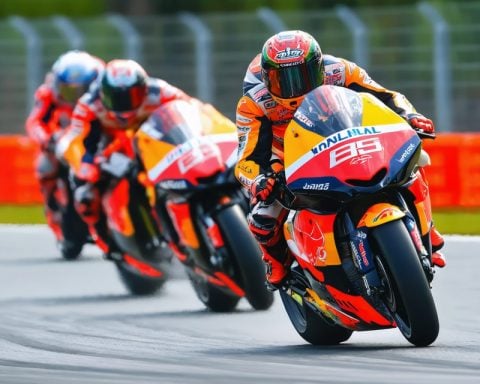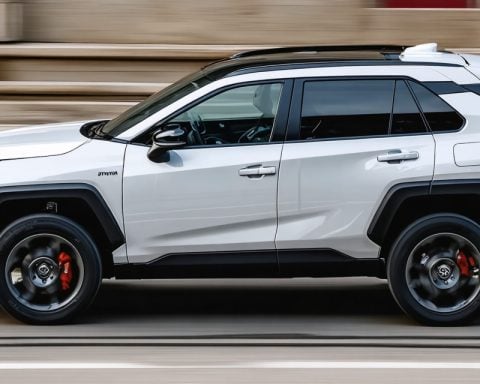The Rise of the Flying Cars Market
The Global Flying Cars Market is witnessing an unprecedented evolution. Valued at approximately $86.15 million in 2023, projections indicate it could soar to $1,026.32 million by 2031, with a remarkable compound annual growth rate (CAGR) of 36.30% anticipated from 2024 to 2031.
This burgeoning market goes beyond surface-level trends and insights. It delves into the nuances of market dynamics, identifying regional strengths, demand forecasts, and transformative breakthroughs poised to redefine industry standards. At its core, flying cars integrate road and air transport technologies, utilizing vertical take-off and landing (VTOL) systems. Their design goals focus on alleviating congestion and minimizing travel times—showcasing their potential for both urban and intercity transport.
Key players fueling this innovation include established companies like Aeromobil, Airbus, and Joby Aviation, alongside emerging startups. They are tackling challenges in propulsion systems—with an emphasis on electric and hybrid technologies.
Geographically, the report highlights leading markets in regions such as North America, Europe, and Asia Pacific. Industry developments are not limited to traditional aircraft; notable advancements now also encompass passenger drones and sustainable applications.
As the sector progresses rapidly, staying informed and adaptable will be crucial for stakeholders aiming to capitalize on this transformative wave in mobility solutions.
The Broader Implications of the Flying Cars Market
The rise of the flying cars market is not merely a technological curiosity; it holds profound implications for society, culture, and the global economy. As urban populations swell and traffic congestion becomes a perennial issue, the integration of flying vehicles could dramatically reshape urban planning, leading to smart city innovations. Less reliance on traditional roadways may transform land usage, potentially repurposing ground-level infrastructure for green spaces or community areas.
Culturally, flying cars represent the embodiment of a long-held dream—a testament to human ingenuity and a shift in how we view personal mobility. As these vehicles become more accessible, they could democratize air travel, changing the way people perceive distances and daily commutes. This evolution nurtures a culture that embraces innovation and forward-thinking, shifting societal norms around transportation.
From an economic standpoint, the burgeoning flying cars industry has potential global market ramifications. Job creation within sectors such as manufacturing, maintenance, and flight operations could usher in a new era of employment. Moreover, the anticipated demand for infrastructure—like vertiports and charging stations—could spur significant investment, fostering economic growth across various regions.
However, the environmental impact of this industry cannot be overlooked. While electric and hybrid technologies promise cleaner alternatives, concerns about noise pollution and energy consumption must be addressed as this market matures. In the future, sustainable practices and regulation will be essential to striking a balance between innovation and environmental stewardship, ensuring that the vision of flying cars enhances societal wellbeing without compromising our planet.
The Future of Mobility: Exploring the Promising Flying Cars Market
The Rise of the Flying Cars Market
The Global Flying Cars Market is on the brink of a significant transformation. Estimated to be valued at $86.15 million in 2023, it is projected to grow exponentially, reaching approximately $1,026.32 million by 2031. This growth signifies an impressive compound annual growth rate (CAGR) of 36.30% anticipated from 2024 to 2031, highlighting the increasing interest and investment in this innovative sector.
Key Features of Flying Cars
Flying cars, often equipped with Vertical Take-Off and Landing (VTOL) capabilities, are designed to bridge the gap between road and air transport. Their engineering focuses on:
– Efficiency: Reducing travel times significantly.
– Congestion Alleviation: Easing traffic in densely populated urban areas.
– Sustainability: Incorporating electric and hybrid propulsion systems to minimize environmental impact.
Use Cases and Market Applications
Flying cars are not just a futuristic concept; they are positioned for real-world applications. Potential use cases include:
– Urban Air Mobility (UAM): Providing quick transport in metropolitan areas, reducing reliance on traditional vehicles.
– Emergency Services: Enhancing response times for ambulances and fire services in hard-to-reach locations.
– Tourism and Leisure: Offering aerial sightseeing experiences, which are far more efficient than ground transport.
Pros and Cons
Pros:
– Significantly reduces traveling time.
– Can ease congestion in city centers.
– Environmentally friendly alternatives through electric technology.
Cons:
– High development and operational costs.
– Regulatory challenges and safety concerns.
– Public acceptance and infrastructure readiness remain obstacles.
Market Trends and Innovations
Several trends are shaping the future of the flying cars market:
– Increased Investment: Venture capital is flocking to companies innovating in this space, with significant funding rounds for startups.
– Technological Innovations: Advancements in AI, automation, and battery technology are enhancing the feasibility of flying cars.
– Regulatory Frameworks: Countries are beginning to establish guidelines and air traffic management solutions tailored to flying vehicles.
Pricing and Specifications
While pricing for flying cars varies widely depending on specifications and capabilities, preliminary estimates suggest costs could range from $200,000 to $5 million for personal models. Specifications such as range, maximum altitude, and passenger capacity are critical factors affecting pricing.
Geographical Insights
North America, Europe, and Asia Pacific are leading the way in market development. North America leads in technological advancements and investment, while Europe focuses on regulatory frameworks, and Asia Pacific is expanding rapidly in innovation and production capabilities.
Conclusion
The landscape of transportation is rapidly evolving, and the flying cars market stands at the forefront of this urban mobility revolution. As established manufacturers and innovative startups push the limits of technology and design, stakeholders must remain agile and informed to seize opportunities in this promising sector.
To learn more about the flying cars market and its innovations, visit Flying Cars.












